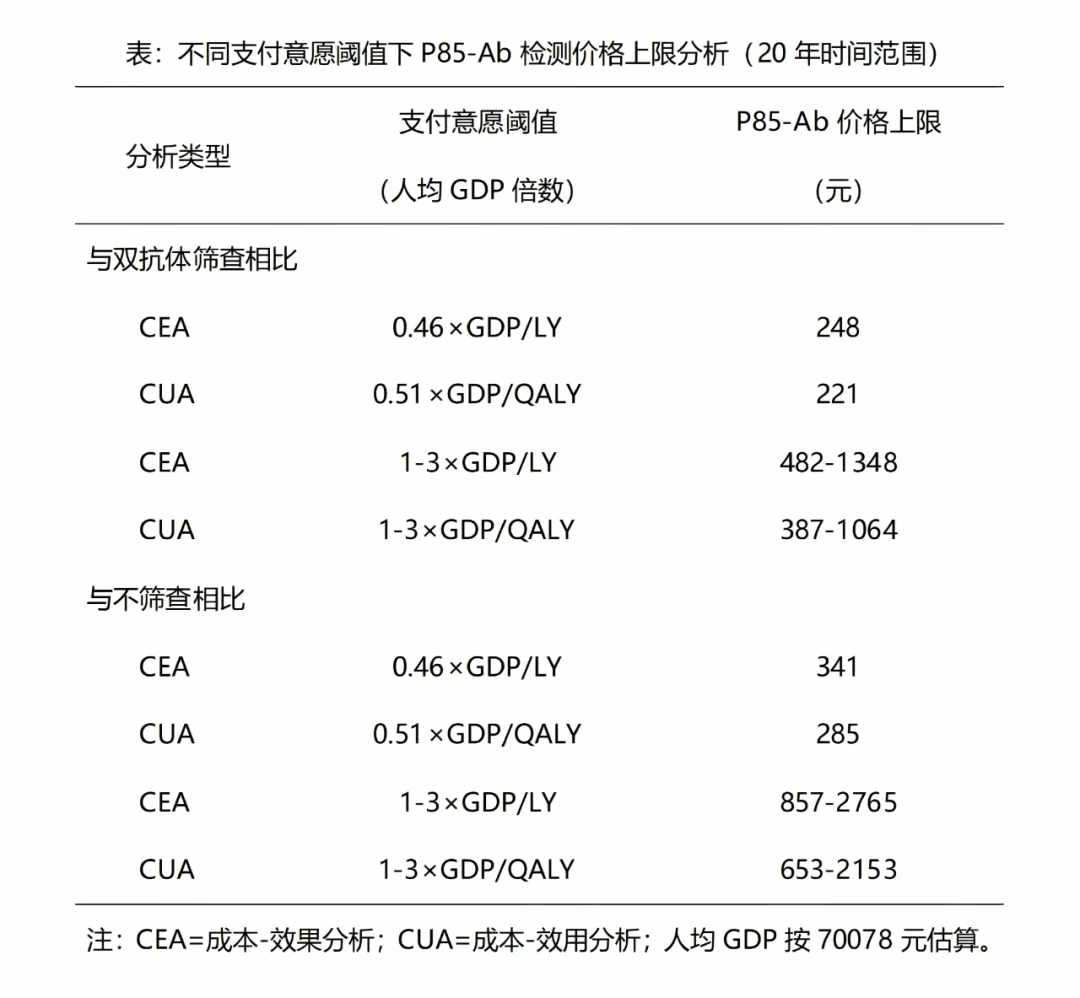Background: Nasopharyngeal carcinoma (NPC) is notably prevalent in southern China and Southeast Asia, highlighting the need for effective screening strategies. Methods: In Zhongshan, Guangdong, a screening program involving 24,852 healthy Cantonese individuals aged 30-69 compared the Anti-BNLF2b total antibody (P85-Ab) with the EBNA1-IgA and VCA-IgA testing (two-antibody method). We examined the cost-effectiveness and cost-utility of screening for NPC with the novel biomarker P85-Ab in China. Results: The P85-Ab screening required 540 initial tests and 8 endoscopies per detected case, compared to 731 tests and 18 endoscopies for two-antibody screening. When the P85-Ab test was priced at ¥133.48, ¥37.48 higher than the two-antibody test, both strategies had an equivalent screening cost of ¥74,039.03 per confirmed NPC case. At a threshold of 0.46 times the per capita GDP per life year, P85-Ab screening remained cost-effective compared to two-antibody screening when the incremental prices of the alternative test were below ¥22.37 (short-term), ¥80.51 (intermediate-term), and ¥152.02 (long-term). When compared to the no-screening strategy, the maximum acceptable prices were ¥51.69 (short-term), ¥181.06 (intermediate-term), and ¥341.82 (long-term). At a threshold of 0.51 times the per capita GDP per quality-adjusted life year, the corresponding incremental prices and maximum acceptable prices were ¥19.83, ¥63.39, ¥125.30, and ¥47.61, ¥145.62, ¥285.56, respectively. Conclusions: Our findings demonstrated that P85-Ab screening enhanced early NPC diagnosis and offered a range of cost-effective pricing, supporting its wider implementation. Impact: These data could inform the design of NPC screening in China, where targeted screening has the potential to reduce health disparities.

Link:https://aacrjournals.org/cebp/article-abstract/doi/10.1158/1055-9965.EPI-25-0648/765902/Preliminary-cost-effectiveness-and-cost-utility-of?redirectedFrom=fulltext